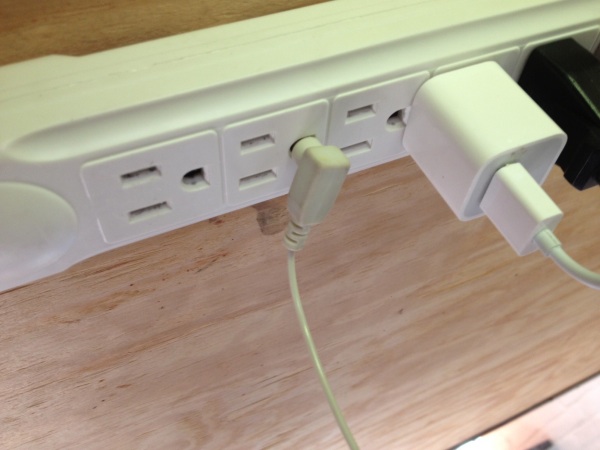Your Appliances Are Grounded, So Why Not You?
The other day I was plugging in my laptop at my coworking space when I noticed something strange. A single cord had been connected to the grounding pin on the power strip under my desk.


That’s when I noticed that it was connected to a pad sitting under my coworkers’ desk. Why on earth would someone want to go to ground, I wondered, unless their goal was to make themselves more likely to be struck by lightning?
As most of us know, that third prong on a plug is the “ground” and it’s there to prevent electrical shock, by providing a pathway for electricity should, say, the metal casing of a device become damaged and come into contact with its electrified innards.
But “Earthing” is something else entirely. From the description on the official site for the movement:
Just as the sun gives us warmth and vitamin D, the Earth underfoot gives us food and water, a surface to walk, sit, stand, play, and build on, and something you never, ever thought about—an eternal, natural, and gentle energy. Think of it perhaps as vitamin G—G for ground. What does that mean to you? Maybe the difference between feeling good and not so good, of having little or a lot of energy, or sleeping well or not so well. […]
Throughout history humans walked barefoot and slept on the ground. But modern lifestyle, including the widespread use of insulative rubber- or plastic-soled shoes, has disconnected us from the Earth’s energy and, of course, we no longer sleep on the ground. Fascinating new research has raised the possibility that this disconnect may actually contribute to chronic pain, fatigue, and poor sleep that plague so many people.
So that’s obviously all a bunch of horse puckey. I asked the owner of the grounding pad what it was for, and her take was that it helps with the increasing volume electromagnetic radiation we’re exposed to every day – wifi, cell phones, smart meters, etc.
So what Earthing is really about is anxiety over our increasingly technological society, which is as old as civilization itself. And you’ll never go broke preying on that sort of fear.
As Brian Dunning put it at Sketpicblog:
They sell bedsheets costing hundreds of dollars, bands and straps to connect to your body, pads and mats to sit on or lay on, travel kits, and my favorite, a pad to lay on your car seat that you sit on (it “neutralizes micro-electrical charges on the body”). And don’t forget your pets: They also sell pet beds, in case Rover is not feeling quite in touch with the Earth’s “energy field”.
Somehow a paper “validating” the pseudoscience of Earthing made it into PubMed – via the Journal of Alternative and Complementary Medicine. Naturally, the study lacked a control group or any attempt to blind researchers to the experimental conditions, which means, as Dunning puts it, that “subjects might as well have been wearing paper hats.”
Keep Reading
Most Popular
Large language models can do jaw-dropping things. But nobody knows exactly why.
And that's a problem. Figuring it out is one of the biggest scientific puzzles of our time and a crucial step towards controlling more powerful future models.
The problem with plug-in hybrids? Their drivers.
Plug-in hybrids are often sold as a transition to EVs, but new data from Europe shows we’re still underestimating the emissions they produce.
Google DeepMind’s new generative model makes Super Mario–like games from scratch
Genie learns how to control games by watching hours and hours of video. It could help train next-gen robots too.
How scientists traced a mysterious covid case back to six toilets
When wastewater surveillance turns into a hunt for a single infected individual, the ethics get tricky.
Stay connected
Get the latest updates from
MIT Technology Review
Discover special offers, top stories, upcoming events, and more.